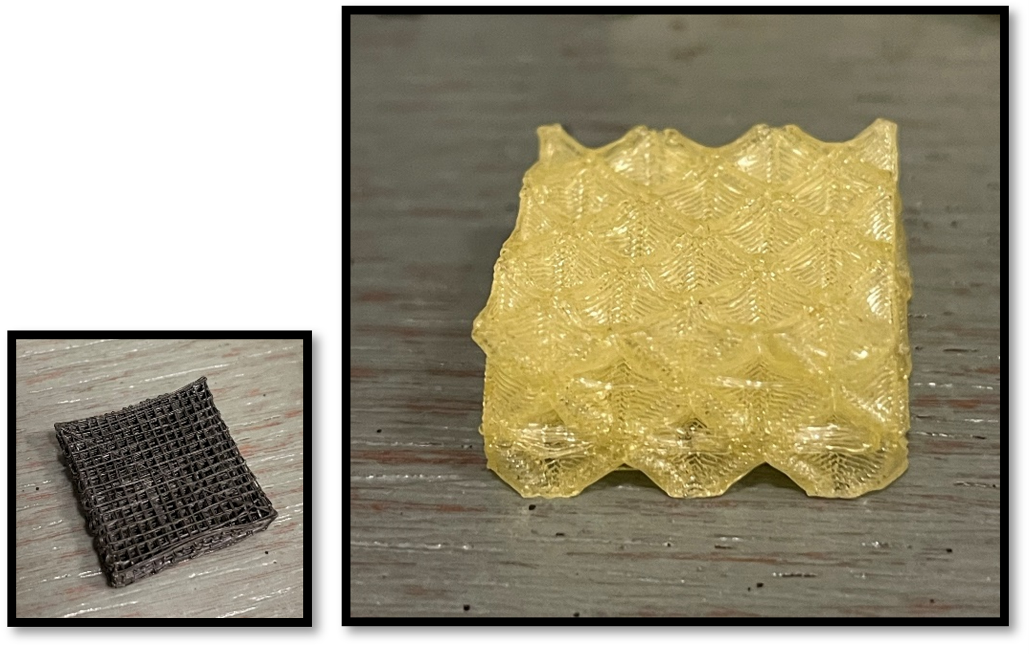PEI is a high-performance polymer with both ether links and imide groups in its polymer chain. Ultem® is General Electric’s trade name for PEI and is highly regarded for its superior strength-to-weight ratio and FST (flame, smoke, toxicity) rating. 3D Printing of Ultem® has only been done through Fused Deposition Modeling (FDM) or Selective Laser Sintering (SLS), which require high temperatures to melt the material in order to set the structure. What is needed is a method to 3D print Ultem® at lower temperatures, thus reducing manufacturing costs.
The novel approach is to make Ultem® into an ink for DIW or droplet printing by dissolving Ultem® in solvents, such as tetrahydrofuran. This produces a viscous solvent-melt that is loaded into an ambient temperature extrusion system and deposited into a defined structure by the 3D printer. Solvent mobility is limited by the polymer structure, and further solvent removal allows multiple layers of the described material to be placed on top of each other to produce the 3D-printed object. Under ambient conditions, solvent removal is accomplished by evaporation from the surface of the part. The speed of evaporation may be modulated by the use of fans directed at the print nozzle, a slight decrease in ambient pressure, or slight increase in ambient temperature.
Image Caption:Materials and methodology allow the printing of complex lattice structures with dimensional accuracy.
- Value Proposition: Less manufacturing costs by 3D printing at ambient conditions
- Current additive manufacturing (AM) processes require high temperatures to melt the material in order to set the structure
- 3D printing at ambient conditions expands the application space of Ultem®
- Alternative to metals in compact electronic gadgets
- High temperature ceramics
- Aerospace, automotive, and biomedical applications
Current stage of technology development: TRL 3
LLNL has filed for patent protection on this invention.


